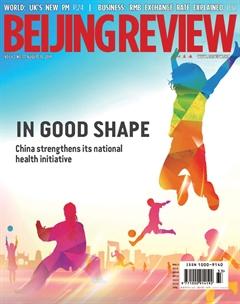No Real Winners
By Michael Zakkour & John L.Ghiorso

The U.S.-China trade war is like a game of monopoly with your in-laws; it might seem like a good idea at fi rst, but there are no real winners in the end. We have consistently stated over the last 17 months that“there are no winners in a trade war.”
Until recently, the concept of mutually assured destruction (MAD) has ensured that pragmatism, problem solving and gradual change were the keys to solving trade disputes. But we stand now at the edge of an unprecedented challenge.
Can two superpowers, with the largest two economies in the world, revert back to the norm an d avoid economic MAD?
The White Houses recent proposal to place additional 10-percent tariffs on $300 billion of Chinese-made goods (beginning September 1) on top of the 25-percent tariffs already in place on $200 billion of imported goods from China will ultimately damage the U.S. economy by shifting massive costs onto the shoulders of U.S. companies and consumers.
So why are the proposed tariffs still in play? Why has the U.S. made tariffs the blunt instrument of its trade policy with China? Outside of obvious geopolitical considerations, misconceptions about the relationship between tariffs and the world of retail perpetuate blind support for them among some in the U.S., while clouding the harsh consequences of a trade war, namely, that U.S. companies and consumers are left to foot the bill.
If the new tariffs do go into effect in September, further damage to the U.S. and Chinese economies is all but guaranteed. For China, the drive to shift manufacturing from low value-added, low-margin products to technology and high value-added production is still in the early stages. The country still depends heavily on its traditional manufacturing and export sectors to sustain growth and employment. Lost production and exports mean slower growth and higher unemployment.
In the U.S., the markets (as well as global markets) reacted with predictable gloom on the news of the proposed new tariffs and the yuan hitting a 10-year low in early August. Both the Dow Jones and NASDAQ indexes experienced top 15 all-time one-day drops in value.
The list of ways in which the ongoing trade war will damage the Chinese, U.S. and global economies in the short and long term is lengthy. Here we will focus on the damage the current and proposed tariffs on imports from China will have on the U.S.
Hands tied
With expensive tariffs looming, suppliers who manufacture their products in China are being told to bring their operations back to U.S. soil. Without mentioning how wishful and unrealistic it is to expect thousands of manufacturers to willingly pick up shop and relocate to the U.S. (where labor costs are exponentially higher). It simply cannot be done with several product categories.
As an example, this is the case with most home appliances. Manufacturing a dehumidifi er, for example, requires massive factories equipped with specialized equipment and fueled by a complex system of raw materials, components and product sourcing. Replicating this infrastructure to shift virtually all dehumidifier production from China to the U.S. (or any other country for that matter) would be so expensive and time-consuming that it is simply untenable as a legitimate solution.
With the potential for a sudden and prolonged strain on the U.S. economy, the new proposed tariffs on China should be seen as nothing more than what they actually are: a lose-lose-lose situation
With no option to relocate, suppliers will be (and already have been) absorbing the cost of tariffs. And since manufacturers operate on a thin margin, sometimes as low as 6-7 percent, most of the increased cost will have to be passed onto retailers, and ultimately, consumers.
Limited margins
Most retailers are incentivized by market competition to offer their lowest prices on goods, leaving only a small margin for profi t. When tariffs force those retailers to accommodate higher costs within already slim margins, we can expect signifi cant economic disruption in the form of massive layoffs, with some estimates putting the fi gure at up to 2 million jobs.
For major employers like Walmart, the majority of those jobs will be entry-level and store management positions, further damaging the U.S. middle class. Thats why over 600 companies and trade associations recently signed a letter pleading with the White House to dismiss the proposal for additional tariffs. UBS bank estimated the new tariffs could mean $40 billion in lost sales, and may force the closing of 12,000 retail stores across the U.S.

Essentially, retailers know that they have only two ways forward. They can take losses on sales or pass the cost onto U.S. consumers. Unless we think that the majority of U.S. retailers are in the game to become nonprofi ts, we should expect the latter outcome.
Costly for consumers
So how much in cost are we talking? And cant retailers and consumers split the cost?
A lot. And no.
When a retailer absorbs 7 percent of a 10-percent tariff and passes the remaining 3 percent onto the consumer, they are taking the maximum cut possible to keep their prices competitive. If that tariff increases to 25 or 35 percent, the retailer will lack the room to take on a proportionate cut. Consequently, the consumers share will increase from 3 percent to a staggering 18-20 percent.
Staying with the dehumidifier example, your standard $150 appliance from Walmart could end up costing $177-185.
While only a $27-increase on dehumidifi ers may not break the bank for every U.S. family, the same outcome multiplied over thousands of products purchased daily will, without a doubt, be felt by the average U.S. household. Thats why, as many others have suggested, the proposed tariffs function as a steep tax on U.S. consumers.
As the whole of the U.S. economy winces in nervous anticipation, its not crazy to wonder whether these outcomes could knock the U.S. into a recession. After all, many economists deem the U.S. overdue for a dramatic economic downturn. Worst of all, history has taught us that lagging economic indicators delay the full impact of catastrophic effects until long after they are easily fixable. With the potential for a sudden and prolonged strain on the U.S. economy, the new proposed tariffs on China should be seen as nothing more than what they actually are: a lose-lose-lose situation.

